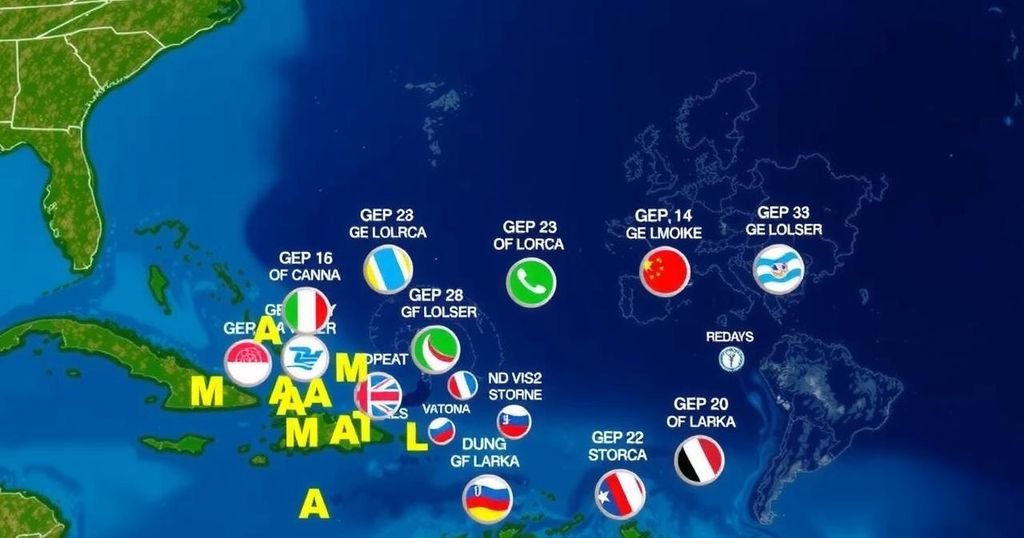The 2024 Atlantic hurricane season ended with 11 hurricanes, surpassing the average of seven. Major storms included Hurricane Beryl, which was the first Category 4 hurricane in June, and Hurricane Helene, which was devastating and deadly. The season was marked by unusually warm ocean temperatures that may have facilitated the storms’ intensity and timings, highlighting a concerning trend in climate impacts on hurricane activity.
The 2024 Atlantic hurricane season concluded on Saturday, marking an unusually active period that recorded 11 hurricanes, surpassing the average of seven. Meteorologists characterized it as a notably “crazy busy” season, influenced largely by elevated ocean temperatures. Among the significant storms were eight hurricanes that made landfall across the U.S. Gulf Coast, Bermuda, Cuba, the Dominican Republic, and Grenada.
Among the notable storms was Hurricane Beryl, which set a record as the first Category 4 hurricane of June, making landfall on the island of Carriacou, Grenada. This storm remarkably intensified into the earliest Category 5 hurricane on record in the Atlantic by July 1. Tropical cyclones of such intensity are typically not observed prior to September 1, as noted by the National Hurricane Center.
Hurricane Helene emerged in September, inflicting devastating damage across the southeastern United States and resulting in over 200 fatalities, this being the deadliest storm since Hurricane Katrina in 2005. The economic toll in North Carolina alone is estimated at $48.8 billion, with massive destruction across homes, water systems, and agricultural sectors spanning several states.
In October, Hurricane Milton intensified to wind speeds of 180 mph, marking one of the most powerful hurricanes recorded in the Gulf of Mexico. The damage from Helene and Milton contributed to unprecedented rainfall levels in regions such as Asheville, Tampa, and Orlando during this period.
Hurricane Rafael made its mark in November, reaching wind speeds of 120 mph just shy of the strongest November hurricane record. The storm battered Cuba amid ongoing recovery efforts from previous hurricanes earlier in the season, demonstrating the season’s odd temporal phenomena.
The warming of ocean waters, attributed to the accumulation of greenhouse gases like carbon dioxide and methane, is believed to play a significant role in facilitating the formation and extremity of these hurricanes. As scientist Brian McNoldy observed, the unprecedented timing and intensity of storms like Beryl and Milton reflect the changing dynamics of hurricane generation. “I do not ever point to climate change as causing a specific weather event, but it certainly has its finger on the scale and makes these extreme storms more likely to occur,” he remarked.
The Atlantic hurricane season occurs annually from June 1 to November 30, with significant attention given to the number of storms that develop, their intensities, and the impacts they have on coastal regions. Many factors influence hurricane formation, including atmospheric conditions, ocean temperatures, and climate change, which has increasingly been acknowledged for its role in affecting weather patterns. The past few seasons have seen heightened activities, with forecasts suggesting that such trends could continue due to warmer ocean conditions.
The 2024 Atlantic hurricane season highlighted unprecedented storm activity, with 11 hurricanes reported and remarkable instances of intense storms occurring earlier and later in the season than traditionally expected. The profound impacts on human life and infrastructure illustrate the increasing frequency and intensity of severe weather events, which experts attribute to a combination of natural variability and climate change. As this trend continues, the need for effective preparedness and adaptation measures becomes ever more critical.
Original Source: www.arkansasonline.com







